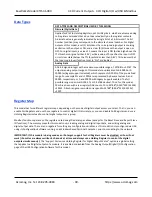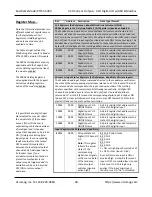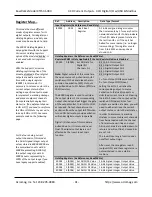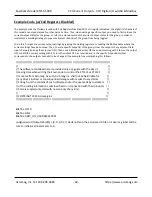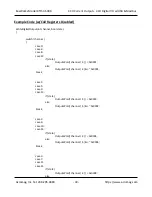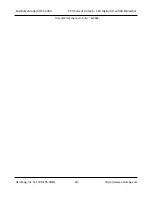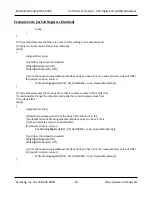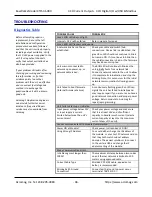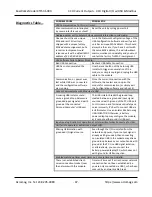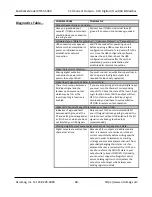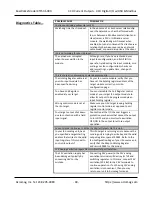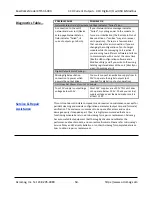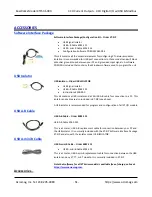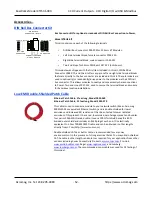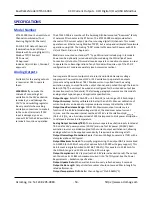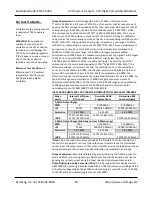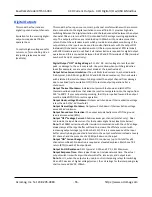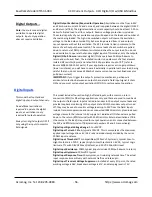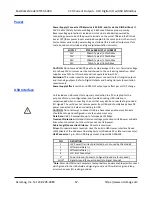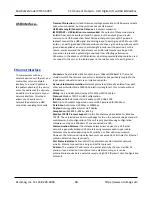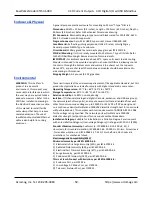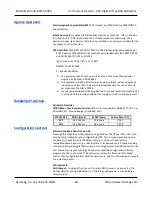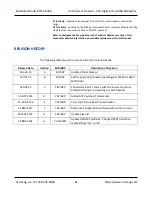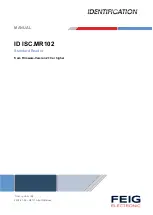
BusWorks Model XT1531‐000
4 CH Current 4 CH Digital I/O w/USB & Modbus
Acromag, Inc. Tel: 248‐295‐0880
‐
53
‐
SPECIFICATIONS
Model Number
XT1531‐000 (Four Current Output
Channels combined w/ Four
Sourcing Digital I/O Channels)
4 AO & 4 DIO Output Channels
(Combination Current Output
Module with Sourcing Digital I/O)
Modbus TCP/IP Support
DC Powered
CE Approved
Includes UL/cUL Class I, Division 2
approvals
Analog Outputs
Excitation for the analog outputs
is required at TB3 to operate
them.
WARNING:
If you make the
mistake of connecting 24V
excitation to the 12V excitation
terminals, you will damage the
12V TVS and switching regulator.
Be very careful when making
excitation connections to make it
to the correct terminals. If 12V
input is damaged, you can
connect 24V to the 24V excitation
terminals to continue operation.
The XT1531‐000 is a member of the Acromag DIN‐Rail mounted, “Busworks” family
of network I/O modules in the XT Series. The XT1531‐000 model provides four
channels of DC current output, plus four sourcing digital I/O channels. This model
operates over Ethernet using Modbus TCP/IP, but is setup and calibrated for network
operation using USB. The trailing “‐000” model suffix denotes DC power with CE &
UL/cUL Class I, Division 2 Approvals.
Models are mounted on standard “T” Type DIN rail and include plug‐in terminals.
Power can be optionally (or redundantly) bussed along the DIN rail (see Power
Connections). Outputs of this model require separate connections to power in order
to operate them. Reconfiguration of any XT model will r
equire use of the XT‐SIP
configuration kit, ordered separately (see Accessories section).
Four separate DC current outputs share return and include transient voltage
suppression. You must connect 12V or 24V excitation to operate the outputs
(connect analog excitation at TB3). Positive current is pulled from the analog
excitation supply, sourced from the output channel, and pushed through the load to
Return (RTN). The unit must be wired and configured for the intended output (see
Connections section for de
tails). The following paragraphs summarize this model’s
analog output type, ranges, and applicable specifications:
Output Ranges:
Select 0‐20mA DC or 4‐20mA DC (a sub‐range of 0‐20mA range).
Output Accuracy:
Factory calibrated to better than ±0.1%. Manual calibration of
current outputs can be done to improve output accuracy to better than 0.05%.
Output Load Resistance Range:
250‐550Ω. Maximum output resistance is a
function of the 14.8V internal voltage rail Vexc, the maximum output current
Io_max, and the required internal overhead of 2.4V via the relationship R
load_max
~
(14.8
–
2.4)/Io_max. A minimum load of 225Ω is imposed to limit power dissipation
to safe levels at elevated temperature.
Analog Output Excitation (TB3):
There are two separate excitation inputs located at
TB3: one for 12V power sources (10‐15V) and one for 24V power (20‐28V). Both
excitation sources are diode‐coupled to the current output excitation rail, allowing
analog excitation to be supplied redundantly if required. See Warning at left.
Output Overvoltage Protection:
Bipolar Transient Voltage Suppressers (TVS) with a
clamp level above 14V typical.
Output Maximum Current:
To simplify programming, the output DAC is normalized
to 0‐30000 for 0‐100% of output (or optionally to 0‐20000 w/ Legacy support). This
16‐bit count is digitally limited to 32768 (~109.2%). This equates to 21.845mA for
the 0‐20mA range, and 21.476mA for the 4‐20mA range.
Output Compliance:
12.4V typical (with a 14.8V internal excitation rail). The output
ca
n thus drive its 21.845mA maximum current into ~567Ω typical. See the Power
Requirements
–
Excitation specification.
Output Update Rate:
When written & continuously refreshed every 5 seconds.
Output Cable Length:
Output interface cables should not exceed 30m in length for
rated performance.
Output Temperature Drift:
Better than
60ppm/
C (±0.0060%/
C).

